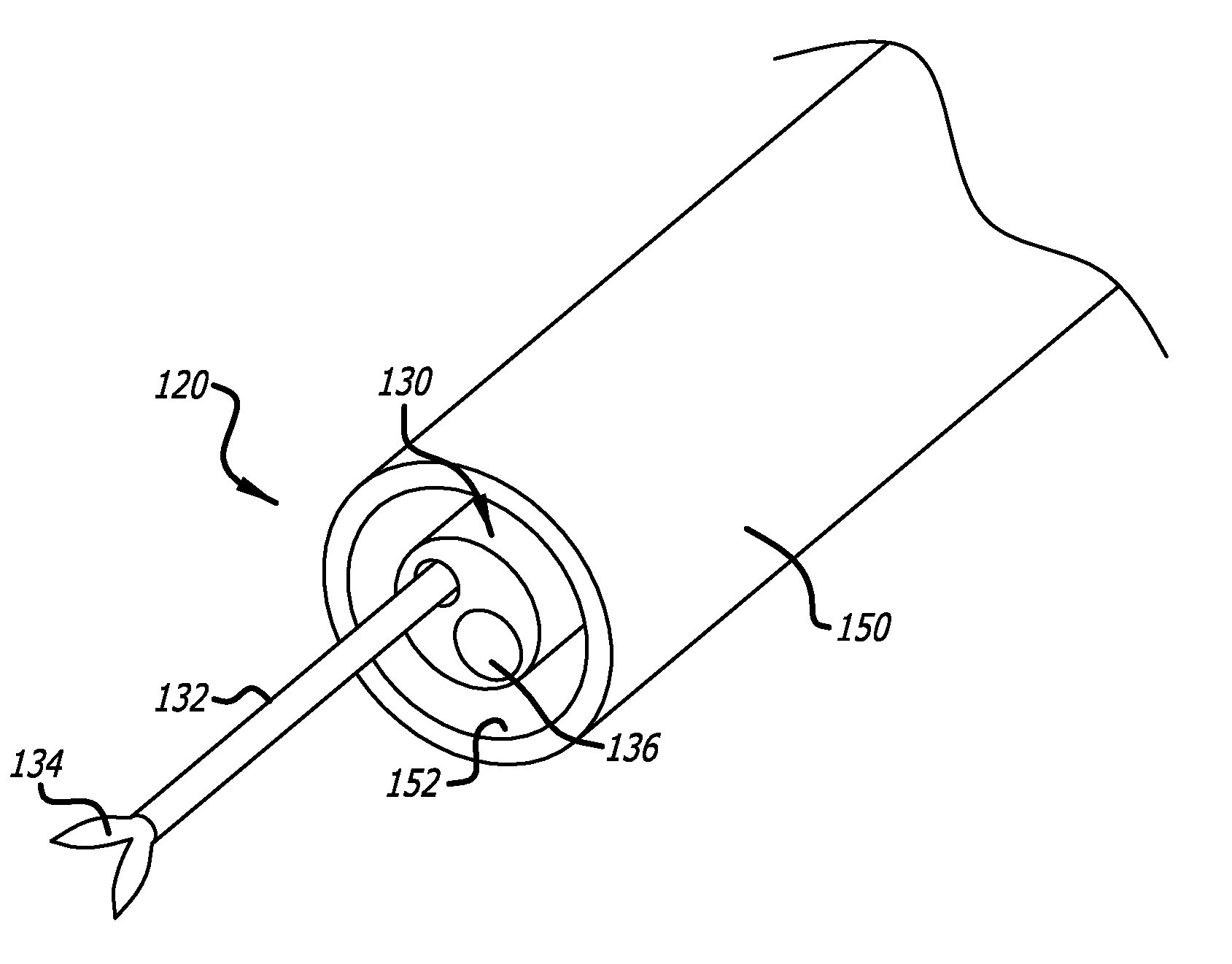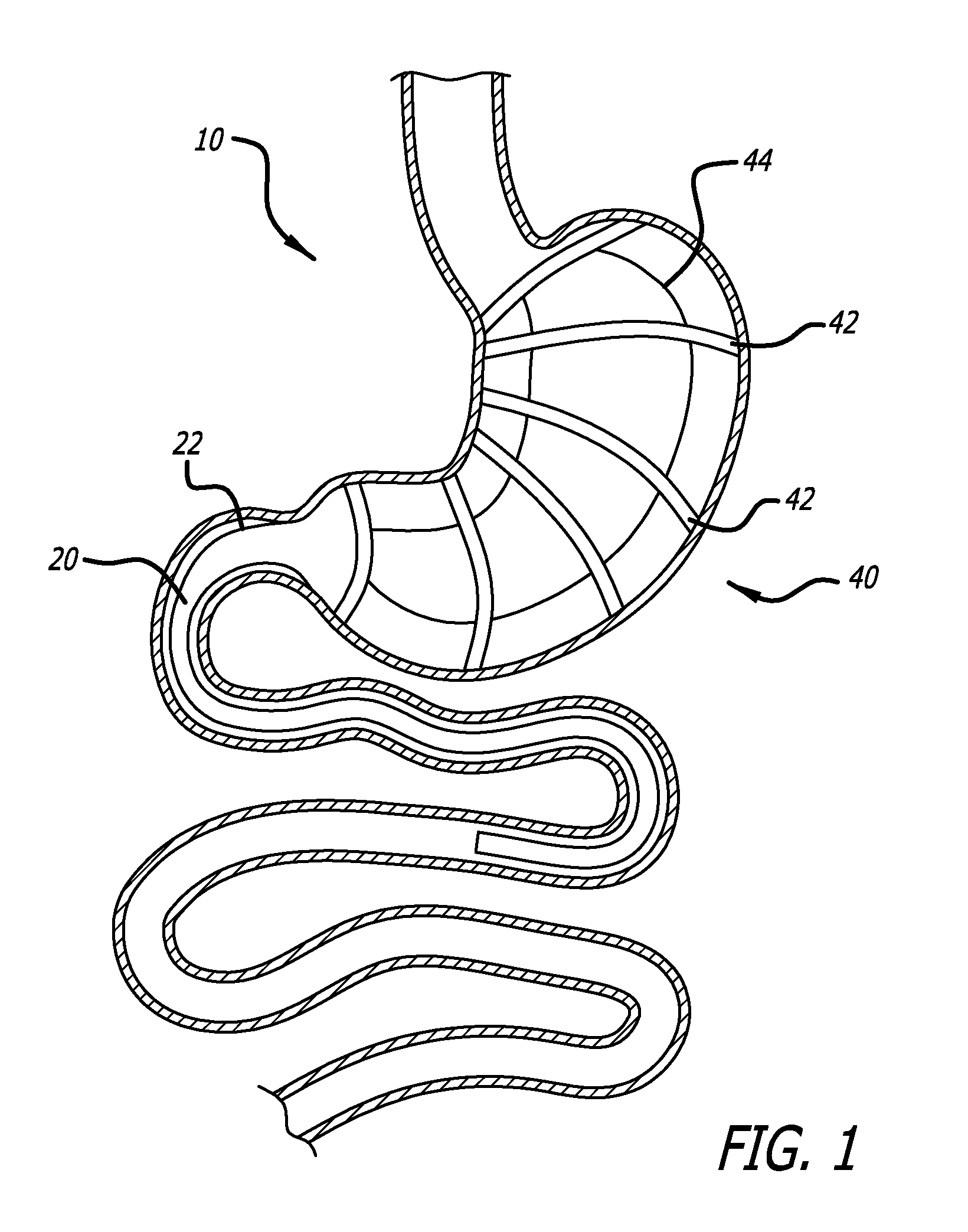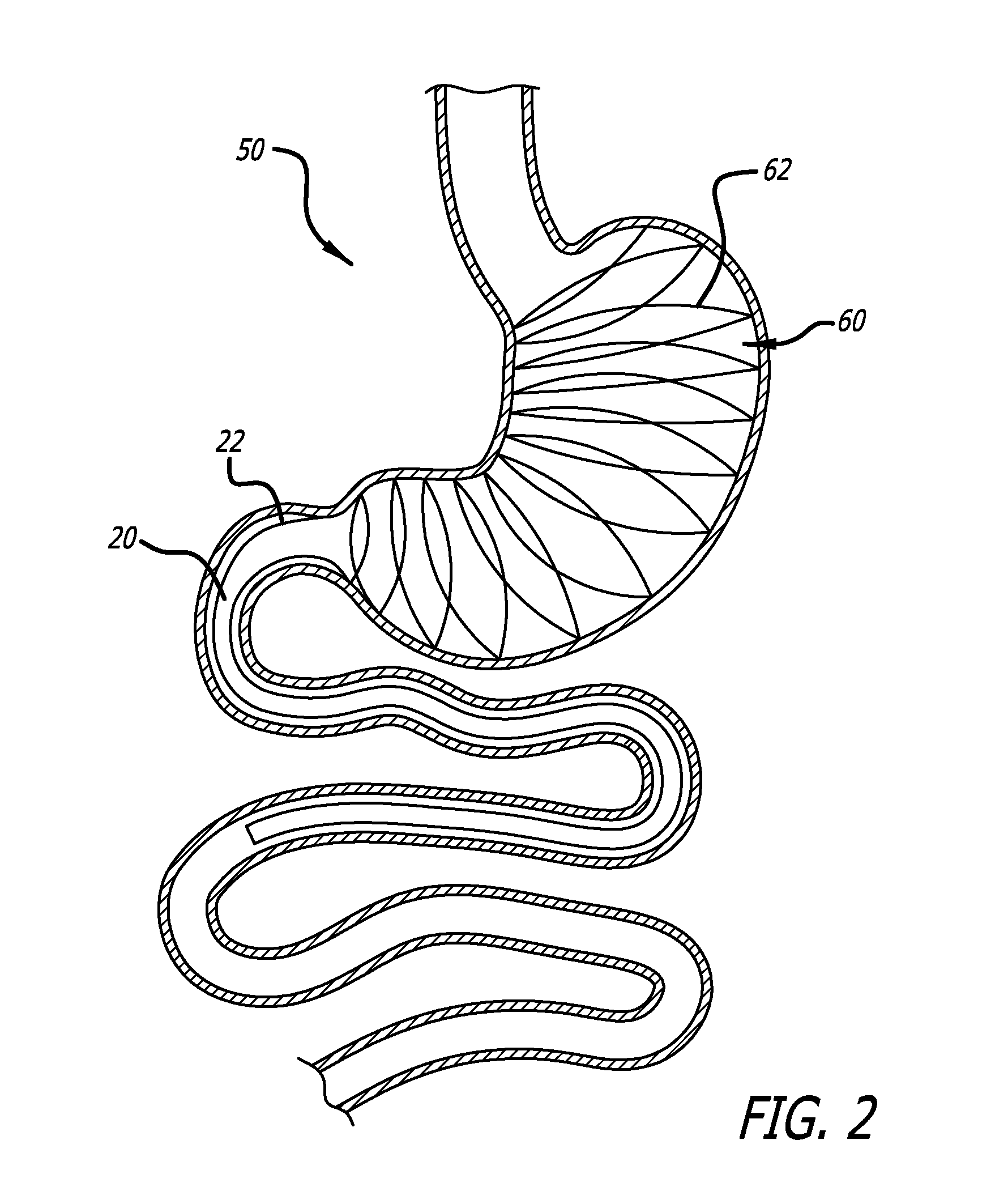Methods And Devices For Anchoring A Gastroenterologic Sleeve
a gastroenterologic and sleeve technology, applied in the field of improved methods and devices for anchoring a gastroenterologic sleeve, can solve the problem of too large to migrate out of the stomach
- Summary
- Abstract
- Description
- Claims
- Application Information
AI Technical Summary
Benefits of technology
Problems solved by technology
Method used
Image
Examples
Embodiment Construction
[0018]Referring now to the figures and first to FIG. 1 there is shown an embodiment of the present invention that includes a device 10 for creating a malabsorption condition in the stomach and / or duodenum. The device 10 generally includes an absorption-limiting or preventing sheath or tube 20 that is attached at a proximal end 22 to an anchoring device 40.
[0019]The anchoring device 40 includes a plurality of rings 42, such as pessary rings for example, connected together by thin connectors 44. The rings 42 are resilient and collapsible such that they may be compressed into elongate members for introduction into the stomach via the esophagus with a catheter or endoscope. Upon release from the delivery device, the rings 42 expand and orient themselves in a spaced-apart fashion. The rings are sized and arranged according to the shape of the stomach and it is envisioned that each device will be sized proportionately to the size of the patient, if necessary.
[0020]The connectors 44 are th...
PUM
 Login to View More
Login to View More Abstract
Description
Claims
Application Information
 Login to View More
Login to View More - R&D
- Intellectual Property
- Life Sciences
- Materials
- Tech Scout
- Unparalleled Data Quality
- Higher Quality Content
- 60% Fewer Hallucinations
Browse by: Latest US Patents, China's latest patents, Technical Efficacy Thesaurus, Application Domain, Technology Topic, Popular Technical Reports.
© 2025 PatSnap. All rights reserved.Legal|Privacy policy|Modern Slavery Act Transparency Statement|Sitemap|About US| Contact US: help@patsnap.com



